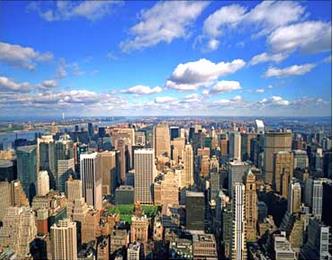6.The Growth of City
6.城市的发展
More and more of the world's population areliving in towns or cities. The speed at which cities are growing in the lessdeveloped countries is alarming. Between 1920 and 1960, big cities in developedcountries increased two and a half times in size, but in other parts of theworld the growth was eight times their size.
世界上越来越多的人居住在城镇或都市里。在次发达国家中,城市的扩张速度是值得关注的。在1920至1960年间,发达国家大城市的规模增加了两倍半,但是在世界其他地方,城市的规模相当于原来的8倍。
The sheer size of growth is bad enough, butthere are now also very disturbing signs of trouble in the comparison ofpercentages of people living in towns and percentages of people working inindustry. During the 19th century, cities grew as a result of the growth ofindustry. In Europe, the proportion of people living in cities was alwayssmaller than that of the workforce working in factories. Now, however, thereverse is almost always true in the newly industrialized world; The percentageof people living in cities is much higher than the percentage woking inindustry.

仅仅就城市增长的规模而言已经够糟的了,但是倘若把居住在城镇和都市的人口的比例和从事工业人口的比例进行比较的话,现在也出现了非常让人不安的迹象。在19世纪,作为工业发展的产物,城市也随之扩张。在欧洲,居住在城市人口的比例总是比在工厂中工作的劳动力的比例要小。然而,在新兴的工业化地区,情况几乎总是相反的——在城市居住的人口比例要远远高于工厂中劳动人口的比例。
Without a base of people working inindustry, these cities cannot pay for their growth. There is not enough moneyto build adequate houses for the people that live there, let alone the newarrivals. There has been little opportunity to build water supplies or otherfacilities. So the figures for the growth of towns and cities representproportional growth of unemployment and underemployment, a growth in the numberof hopeless and despairing parents ans starving children.
没有从事工业的劳动力基础,这些城市就无法偿付它们的扩张。它们将缺乏为在那儿生活的居民建造足够住所的资金,更不必说满足后来者的居住了。它们将很难有机会修建供水系统和其他设施。城镇和都市扩张的数字代表着失业和未充分就业增加的比例,代表着越来越多的失望的、沮丧的父母和饥肠辘辘的儿童。












